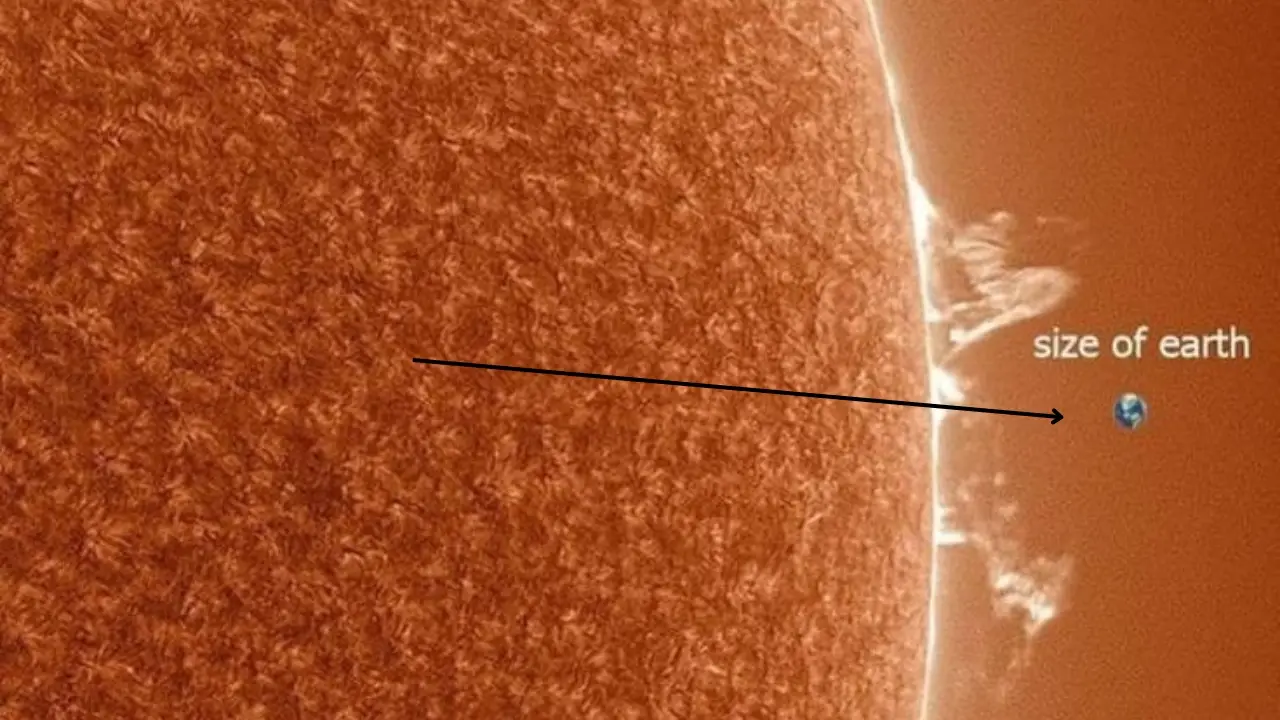When we gaze up at the sky, the sun appears as a small, bright disc, providing us with light and warmth. Yet, this image belies the true scale and power of our star. The sun, a gargantuan ball of plasma, dwarfs every planet in our solar system, and a striking visual comparison often used to illustrate this is the juxtaposition of the size of the Earth against the sun’s surface.
In the image above, we see a close-up view of the sun with a tiny Earth for scale. This dramatic visualization helps us grasp just how massive the sun really is.
The Sheer Size of the Sun
The sun’s diameter is about 1.4 million kilometers (870,000 miles), which is approximately 109 times the diameter of Earth. This means that if the sun were a hollow sphere, you could fit about 1.3 million Earths inside it! This immense size is a fundamental aspect of why the sun is such a powerful and crucial part of our solar system.
Understanding Solar Activity
The sun is not a static entity; it’s a dynamic, ever-changing body. The close-up image reveals some of the intricate textures and patterns on the sun’s surface. These features are a result of the intense and complex interactions within the sun’s plasma. Solar flares, sunspots, and prominences are common phenomena that occur due to the sun’s magnetic field and convection processes.
Solar Flares: These are sudden eruptions of energy caused by tangling, crossing, or reorganizing of magnetic field lines near sunspots. They can release as much energy as billions of nuclear bombs exploding simultaneously.
Sunspots: These are temporary phenomena on the sun’s photosphere that appear as spots darker than the surrounding areas. They are caused by the sun’s magnetic field welling up to the photosphere, the sun’s visible surface.
Prominences: These are large, bright features extending outward from the sun’s surface. They are anchored to the sun’s surface in the photosphere and extend outwards into the sun’s hot outer atmosphere, called the corona.
The Importance of the Sun to Earth
The sun is the primary source of energy for our planet. It drives weather, climate, and supports life through the process of photosynthesis in plants. Without the sun’s energy, Earth would be a frozen, lifeless rock. The balance of solar energy received and emitted by Earth governs our climate and weather systems, making the study of the sun not only fascinating but also crucial for understanding and predicting terrestrial weather and climate patterns.
The Sun in Perspective
The visualization of the Earth next to the sun serves as a humbling reminder of our place in the universe. While our planet is our home and feels immense to us, it is just a small speck in the grand scheme of the cosmos. This perspective can foster a greater appreciation for the vastness of space and the remarkable nature of our solar system.
Conclusion
The comparison of Earth’s size to the sun is a powerful tool for illustrating the immense scale of our star. It underscores the vast differences in size and the extraordinary nature of the sun’s physical characteristics. Understanding these concepts not only enhances our knowledge of astronomy and the solar system but also deepens our appreciation for the delicate balance that makes life on Earth possible.
Whether you’re a student, an astronomy enthusiast, or simply a curious mind, visualizing the enormity of the sun compared to our tiny planet can inspire awe and wonder. It reminds us of the incredible forces at play in our universe and the intricate connections between celestial bodies that sustain life on Earth.




